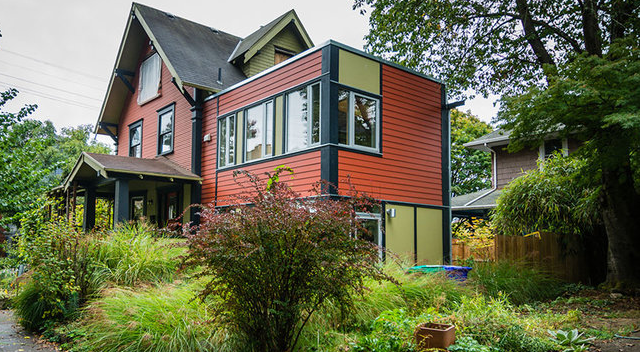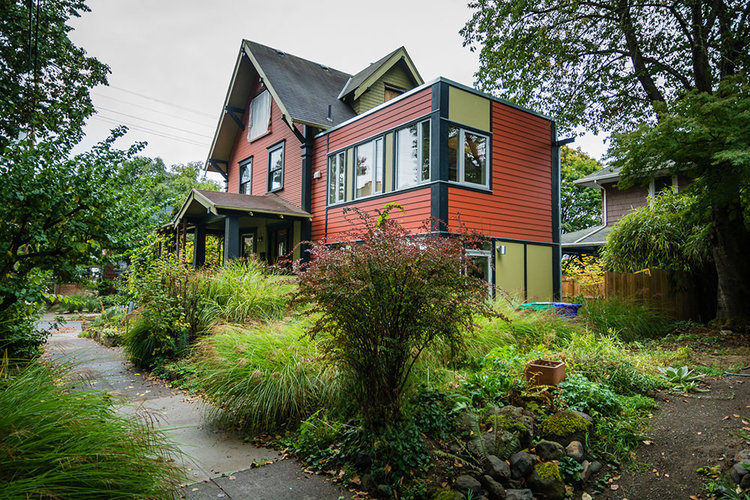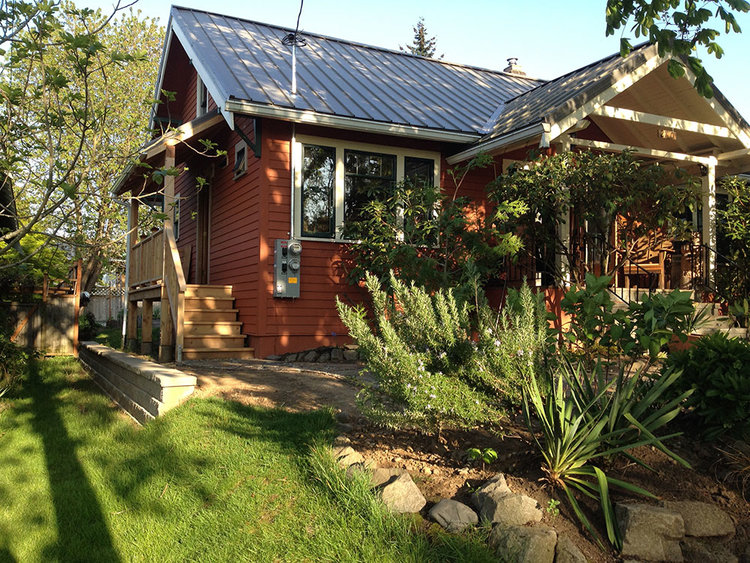
Types Of ADU’S
There are three types of Accessory Dwelling Units (ADUs): interior, attached, and detached ADUs.
Interior ADU – Located in the primary dwelling, an interior ADU is built from existing converted space, usually an attic or basement.
Attached ADU – These additions adjoin the primary dwelling – to the side or rear of the home, or constructed on top of an attached garage.
Detached ADU – A stand-alone structure separate from the primary dwelling. A detached ADU can be built as entirely separate unit or constructed over an existing accessory structure, such as a detached garage.
There are three types of Accessory Dwelling Units (ADUs): interior, attached, and detached ADUs.
Interior ADU – Located in the primary dwelling, an interior ADU is built from existing converted space, usually an attic or basement.
Attached ADU – These additions adjoin the primary dwelling – to the side or rear of the home, or constructed on top of an attached garage.
Detached ADU – A stand-alone structure separate from the primary dwelling. A detached ADU can be built as entirely separate unit or constructed over an existing accessory structure, such as a detached garage.
DEFINING THE ACCESSORY DWELLING UNIT
Under new California state laws, the term “accessory dwelling unit” describes a small, self-contained residential unit located on the same lot as an existing single-family home. An ADU is generally smaller in size while still including all of the basic amenities found in a primary dwelling, such as a kitchen, bathroom and sleeping area.
Today, ADUs go by several names: granny unit, granny flat, in-law suite, in-law cottage, mother-in-law apartment, or secondary dwelling unit. Historically, each of these terms had a unique meaning depending upon the city or county in which the primary dwelling was located. Nowadays, however, they are often used interchangeably.
CALIFORNIA LAW & ITS EFFECT ON ADUS
Existing California law permits the construction of ADUs. However, local ordinances have – perhaps unintentionally – made it difficult for homeowners to build new units by imposing standards at the city and county level to regulate parking, construction, and lot coverage.
Fortunately, in September 2016, Governor Jerry Brown signed three ADU-related bills in an effort to address California’s housing crisis. These new bills also make it easier for California homeowners to obtain permission for ADU construction from local governing bodies.
Senate Bill 1069 reduces or eliminates parking requirements and utility hook-up fees. It also speeds up the approval process for second units attached to a primary residence.
Assembly Bill 2299 goes further than SB1069, requiring local second-unit ordinances to includ e ministerial, non-discretionary approval for any second unit that meets city requirements.
Assembly Bill 2406 streamlines the process for homeowners converting an existing bedroom into an attached studio living unit.
All of these laws intend to limit the ability of local government to regulate ADUs and local governments are required to adopt an ADU ordinance in accordance with the new state requirements by January 1, 2017. Additionally, these laws will speed up the approval process of ADU construction. They will also remove secondary utility hook-up fees that have been paid for by the primary dwelling owners. Furthermore, the laws will eliminate parking requirements for ADUs located in proximity to public transit. Visit here for the most updated information on the ADU Laws from the California Legislature. Hauser Construction is staying on top of the local zoning ordinances in Santa Clara County, with an eye on those successfully promoting the construction of ADUs. Check out the latest on ADU development in your city:

Detached ADU
Detached new construction ADUs, also sometimes called backyard cottages, granny flats, laneway houses, or DADUs, depending on the jurisdiction

ADUs above a garage or workshop, or attached to it. In some areas, these may be called garage apartments or carriage houses
Bump-Out ADUs
the bump-out extends into the setback, the city would not allow it to actually meet the ground. On the other hand, if it didn’t meet the ground, the bump-out would not be considered a part of the footprint and could therefore exist within the setback.
Basement Conversion ADUs
also commonly called basement apartments, mother-in-law units, in law units, secondary suites, English basements, accessory apartments, and a host of other names.
where part of the primary house besides the basement is converted to an ADU
What ADUs Have In Common
While their structural forms vary, ADUs share some common traits and face common design and development challenges. For one thing, the fact that they’re secondary housing units on single family residentially zoned lots places ADUs into a unique category of housing. And ADUs also have some other distinguishing characteristics that help further define, differentiate, and distinguish them from other housing types.
• ADUs are accessory and adjacent to a primary housing unit.
• ADUs are significantly smaller than the average US house.
• ADUs tend to be one of two units owned by one owner on a single family residential lot.
• ADUs tend to be primarily developed asynchronously from the primary house by homeowner developers.
• A large range of municipal land use and zoning regulations differentiate ADU types and styles, and dramatically affect their allowed uses
• Vast numbers of informal ADUs exist compared to permitted ADUs.
These differentiating characteristics make ADUs a distinct type of housing and have led to a lack of common understanding around the language and best practices of ADU development. This site is going to help change that by providing some clarity about ADUs, and how average homeowners can build them.



